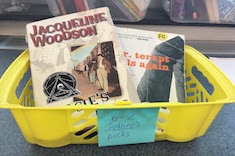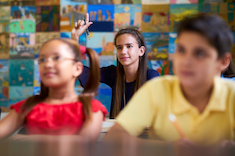Independent-choice reading is the lifeline of our literacy classroom. We are firm believers, like the educators we admire and learn from, that when given the right books, time to read, and time and instruction on how to respond to reading, students will become passionate and curious learners.
Unfortunately, studies like this one by the American Psychological Association show a steep decline in the reading habits of teens. In the late 1970s, 60 percent of 12th graders said they read a book or magazine almost every day; by 2016, only 16 percent did. Approximately one-third of 12th graders did not read a book for pleasure in the year before the 2016 survey, nearly triple the number reported in the 1970s.
These statistics make us even more determined to nurture the independent reading lives of our students, and we have several strategies, below, that support this goal.
Reader’s Choice Baskets
We keep a basket labeled “Reader’s Choice” in our classroom for each section of literacy. Every two to three weeks, we choose a student to place their top two or three reading suggestions with a sticky note on the inside cover that briefly describes why they recommend the chosen books. Last year, we had to purchase multiple copies of The Hate U Give after it landed in our Reader’s Choice basket. The fact is, our students trust the recommendations of their peers.
These are Sydney’s choices:
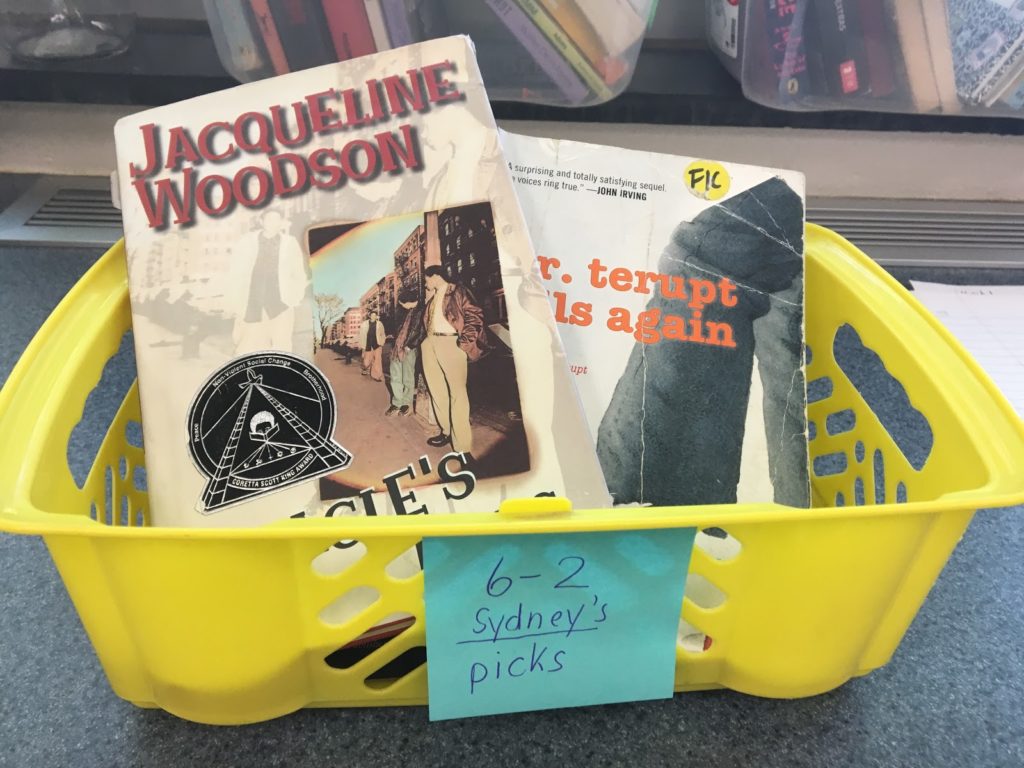
Here is a quick review inside the front cover of Miracle’s Boys, left by Sydney:
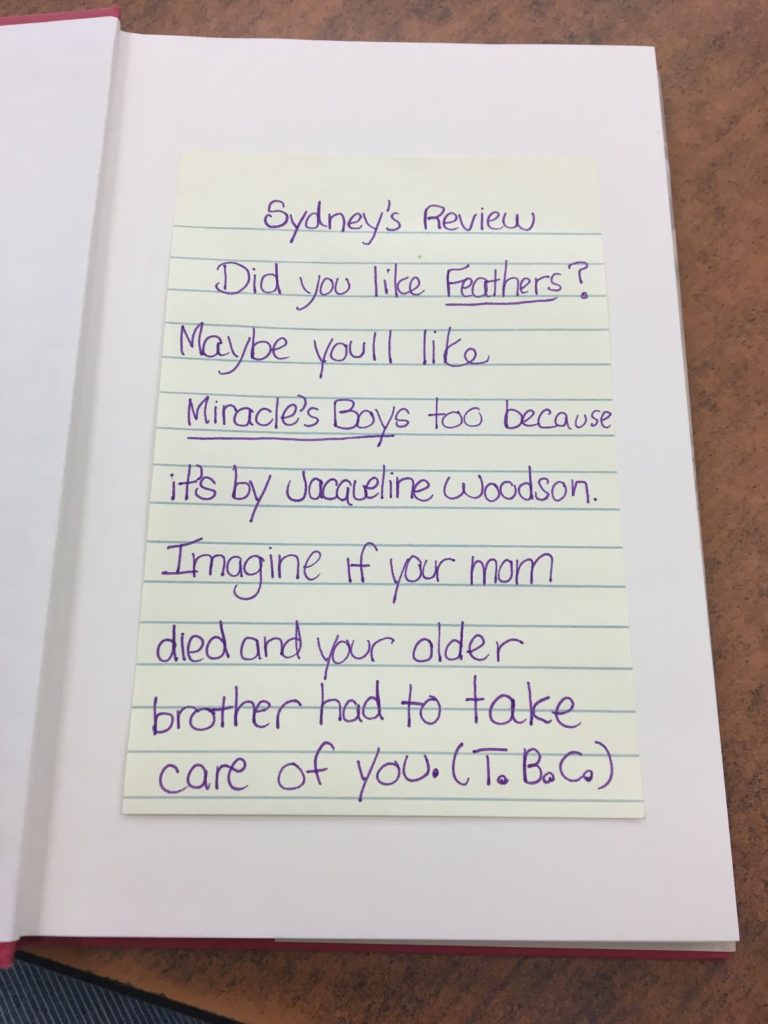
Reading Response Suggestion List
We all have those students who like to read but just don’t understand the purpose of jotting about their reading. We understand this. When we’re at the beach reading during the summer, writing about our reading isn’t part of our reading lives. But we also know from experience that when we write about our reading, we are left with more lasting impressions and ideas.
To help us model authentic writing about reading, we often write about our reading as we read our own books. We try the strategies that we teach in class and reflect on how they help us understand our reading.
One thing that’s helped with this is being part of Penny Kittle’s summer reading club for educators. As we read books, the group facilitates discussions and suggests writing to do in response to reading that can then be shared in a Facebook group. For example, when reading The Crossover by Kwame Alexander a couple of years ago, one of the suggested responses was to write a definition poem following the structure in the book of an important word from the book. We tried this during the summer reading club and had an opportunity to not only share our response but read the responses of other educators.
As we read short texts and whole novels together, we are always modeling ways to respond to a text. We also provide a list of possible ways to respond. We don’t get to model all of them with every text, but we’ve found that having a menu of choices helps students respond to their reading in authentic and original ways.
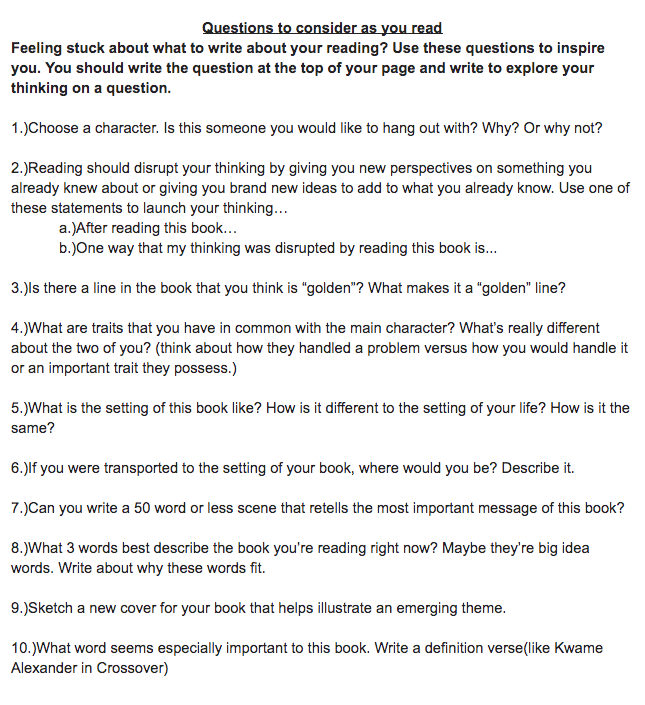
Encouraging Audiobooks
Many of our students are eligible for Bookshare, a free audiobook website. Others have private accounts through Audible. We make a point during independent reading time to suggest that students use audio as they read if it makes reading more enjoyable for them. A lot of people in different situations use audiobooks, so we want our students to know that this is an acceptable way to read, not just something that struggling readers do.
Book-Setting Bulletin Board
On the Goodreads X account, there is often a thread that asks, “Where would you be if you were in the setting of your book right now?” We love this idea as a way to encourage curiosity and discussion about reading, and borrowed it for a class bulletin board that we update every few weeks with sticky notes.
Students write the setting, and sometimes, we’ll give them a minute or two to talk to each other about the board. Sometimes it will just be up for students to look at during independent reading time. It’s really just another informal way of encouraging students to get suggestions from classmates, but we’ve found that it’s a great way to spark curiosity and interest in classmates’ reading lives.
Reading Goals and Tracking Reading
We know that setting goals for our reading helps us stay on track. In school, we have students track their volume across a week to see how much they are reading on average. Then they keep a calendar with their goal written on the back. They track the number of pages they read each day and tape the completed log in their reader’s notebooks when they’ve finished a book. This is a quick way for us to initiate a conversation about consistent reading.
Keeping with the theme of lists, during the first week of school we show students the list of books we read over the summer and explain why keeping the list is an important practice for us, since it motivates us to read more. We make lists such as “Books Read Summer 2020.” It gives a great sense of satisfaction to look back at that list. It also lets us reflect on the type of reading we do. We have all of our students dedicate a page of their notebooks to a list of completed books and remind them throughout the year to add to it. At the end of the year, the list helps them reflect on their reading lives.
Books on Deck
Let’s face it: Having a plan helps us stay on track. During the first week of school, we have all our students dedicate a page of their notebooks to a list titled “Books on Deck.” As we explain to students, this avoids the problem of finishing a book and not knowing what to pick up next, drifting for a week or two without a new book. We start by giving mini book talks for the reading that we’ve done over the summer and invite students to add any titles that interest them to their Books on Deck list. We also show them our own lists.
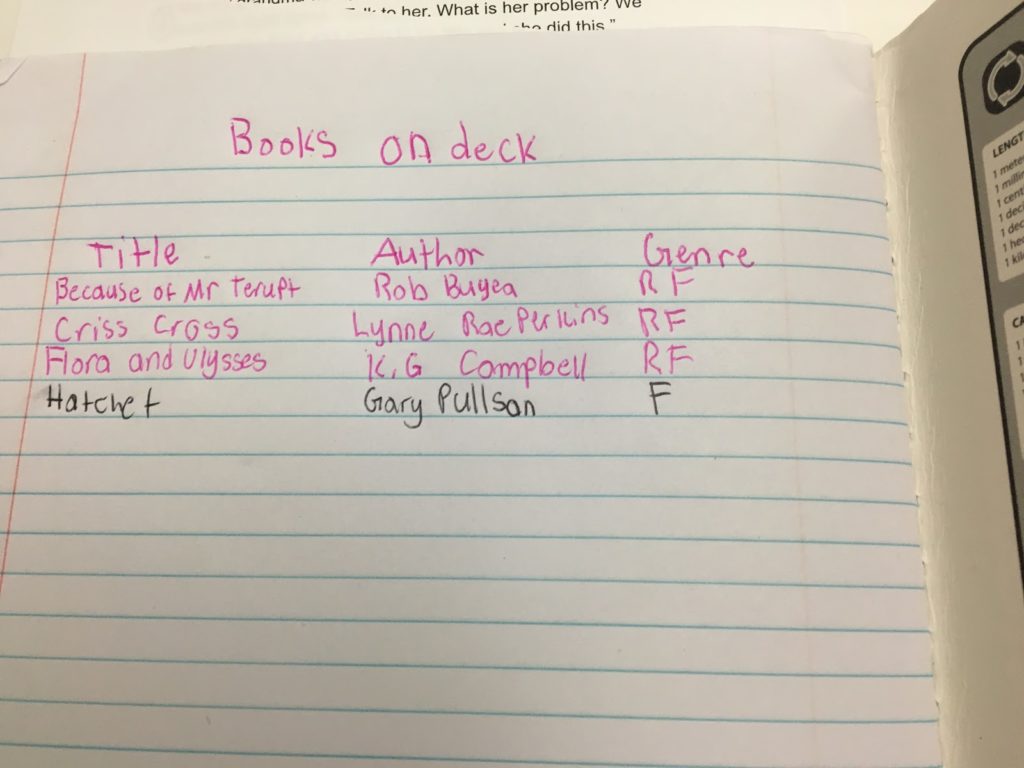
Class Time Dedicated to Reading
All of these ideas work together to send a message that reading is valued, but the most important way we show how much reading is valued in our classroom is by making time for it. We are dedicated to starting every literacy period with 10 minutes of independent reading time. Some days, there is time for more, but we make sure that there is never less. During this time, we circulate and conference. We might check in on a reading log or what a student is writing about their reading that week or what they plan to read next, taking the pulse of the reading going on in the room.
Putting these routines in place helps us keep the most important goal in literacy class front and center: becoming lifelong readers.

